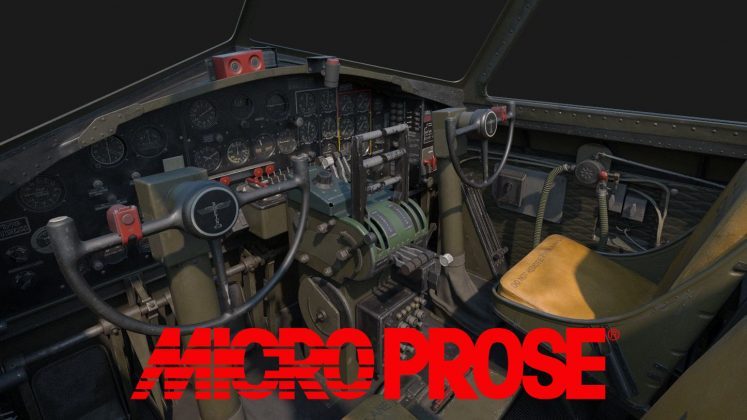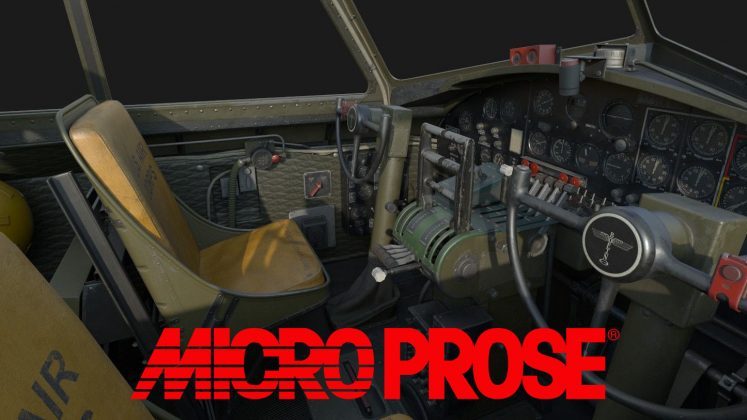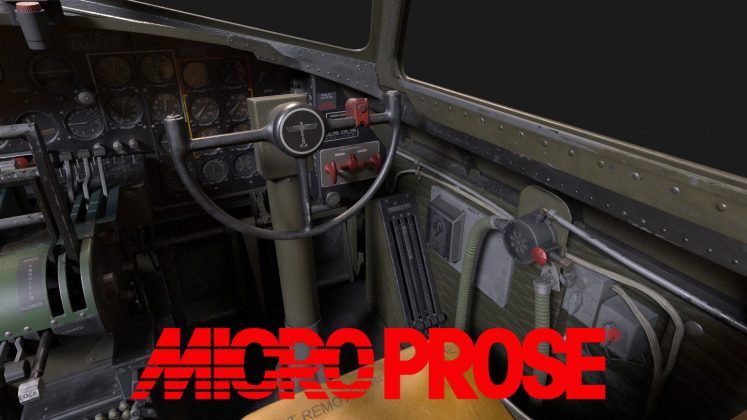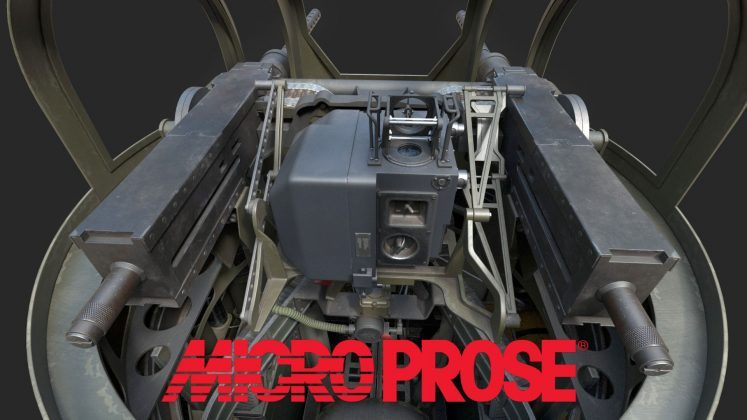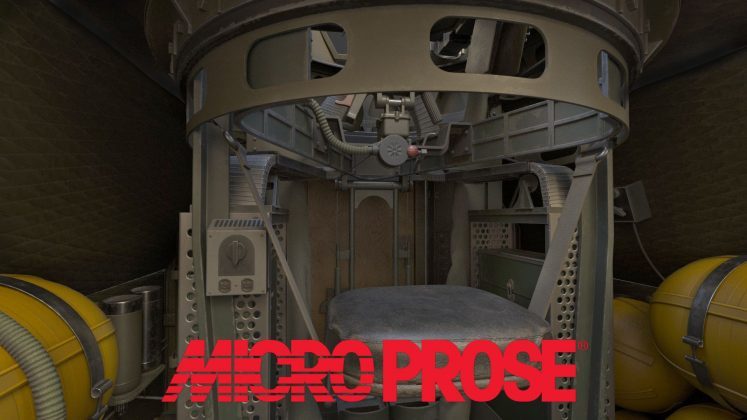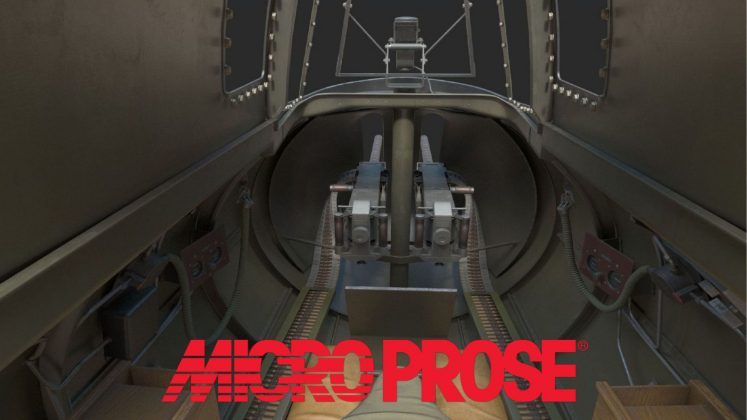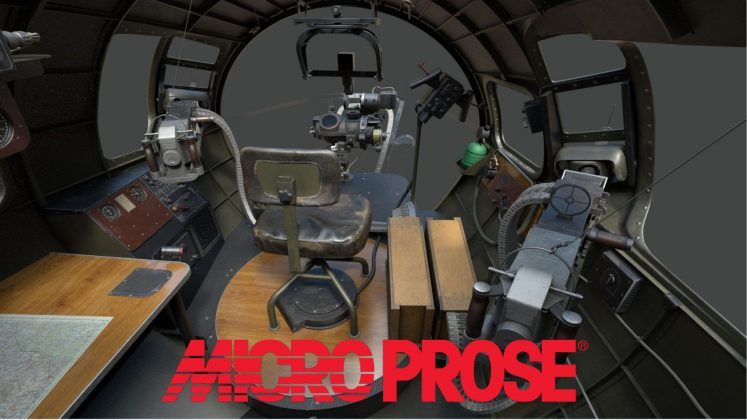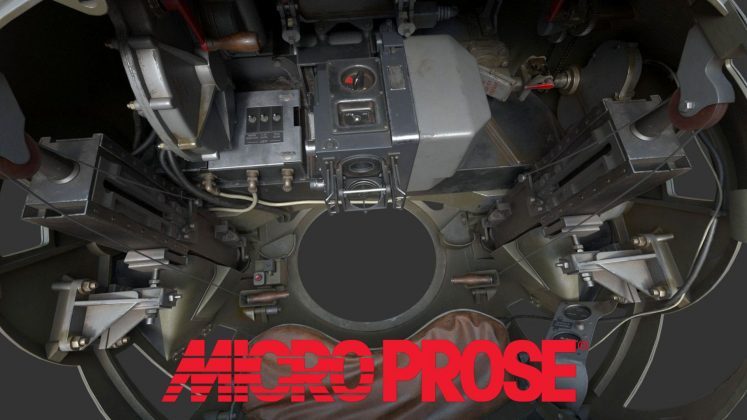Saturday, May 30, 2020
Let's Play OrbusVR's First Mini Story Pack DLC (With Multiplayer View!)
We're back with OrbusVR Reborn! Orbus launched a paid DLC questline which we will check out today. ► Check out our full review of the game while you wait: https://youtu.be/CyxPgJvaKcU ► Check out our VR equipment → https://www.amazon.com/shop/caschary OrbusVR First Mini-Story Pack description: Journey into the hidden microsystems of Patreayl to battle belligerent bugs (and a few monstrous plants) for the fate of a community of sentient lizards. Meet the residents of a quaint mushroom village and try your hand catching moonflies. Defend a patrol outpost overrun by spiders. And finally find your way through a maze of insect-infested tunnels deep underground in search of a sacred object… "Secrets of Mugwood" is the first Mini Story Pack from VR MMORPG OrbusVR. Discover all-new zones, NPCs, and a new questline to follow totaling 10-15 hours of overall content. Mini Story Pack #1 is available for $9.99 as an in-app purchase through OrbusVR's in-game shop. This is our weekly Virtual Reality live stream. Our live streams are usually centered around one topic but we can talk about anything. Come hang out and let's discover VR worlds together. Today's topic(s): OrbusVR Mini-Story Pack DLC multiplayer gameplay & giveaway NORMAL SCHEDULE Every Friday at: 🕛 12 PM PT 🕘 9 PM CET 🕗 8 PM UK Time 🍿 Watch us from within Bigscreen VR too! SUPPORT US Subscribing and watching our videos is by far the biggest support you can give us. However, if you want to do more - you can also donate. All donations go to improving the channel. BUY US A COFFEE & BOOST THE CHANNEL ► One-time donation → http://bit.ly/DonateCasandChary BECOME A CHAMPION (LONG-TIME SUPPORTER) ► Become our Patron (includes exclusive rewards) → http://bit.ly/PatreonCasandChary ► Become a Sponsor on YouTube (includes exclusive rewards) → http://bit.ly/JoinCasandChary USE OUR LINKS TO SUPPORT US ► VRcover → http://bit.ly/CCVRCover ► VR Prescription Lens Adapters (5% discount code: "CAS&CHARY") → http://bit.ly/CCWidmoVR ► Play PC VR games with your Quest (10% discount code: "JWGTCASCHARY") → http://bit.ly/CCRiftcat ► More on our website → https://casandchary.com/discount-codes-affiliate-links/ OUR GEAR Our VR equipment → https://www.amazon.com/shop/caschary Full PC Specs → https://casandchary.com/vr-equipment/ GET LATEST UPDATES Twitter → https://twitter.com/CasandChary Facebook → https://www.facebook.com/casandchary/ Instagram → https://www.instagram.com/casandchary/ Join our Discord → https://discord.gg/YH52W2k A special thanks to these Patreon Champs for their support: - BaxornVR: https://www.youtube.com/channel/UC1tmq8Y3jC7gNGvW7asmv1Q - Wintceas - Studioform VR - Andy - Albert - Ben P. - Steve Dunlap - Thomas M. Rice MUSIC Music we use is from Epidemic Sounds → http://share.epidemicsound.com/zqM3g DISCLAIMER This live stream was sponsored by OrbusVR. Links in this description may contain affiliate links. We may earn from qualifying purchases from these links (without costing you more). VR on! - Cas and Chary VR #orbusvr #orbusvrdlc #casandchary
Friday, May 29, 2020
‘Half-Life: Alyx’ Update Adds Impressive Liquid Simulation, Foundation for Mod Scripting

Half-Life: Alyx was updated this week with an intriguing new feature: a new shader which simulates liquid inside of the game’s many bottles; a small but impressive immersive addition. The update also brought some bug fixes, new subtitle languages, and improved the game’s modding tools.
At launch, Half-Life: Alyx already included a cool immersive detail: many of the game’s small bottles and containers had an associated audio event which—when shaken—makes it sound like there’s actually something inside. Valve took this one step further in the Alyx 1.4 update, which was released this week, by actually rendering liquid inside many of the game’s bottles.
It might seem simple enough—after all, liquid simulations have been around for some time—but Alyx’s approach isn’t really a simulation as that would likely consume too many resources. Instead, the liquid is a shader which is made to look like a convincing simulation.
実際に見ると凄いわこれ pic.twitter.com/4LfrH8dJ4R
— skkn (@skknyuki) May 28, 2020
And it does a pretty darn good job, especially with the way that it interacts with environmental lighting. Valve visual effects developer, Matthew Wilde, said on Twitter that “this booze shader has been my lock-down hobby, required lots of research.”
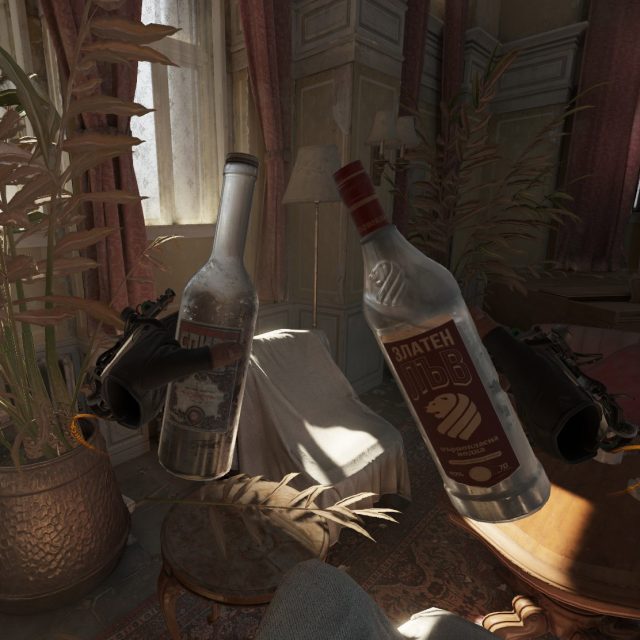
The Half-Life: Alyx 1.4 update also added subtitles for eight new languages—Brazilian Portuguese, Czech, Hungarian, Italian, Polish, Portuguese, Ukrainian, Vietnamese—bringing the game’s total subtitle languages to 18.
The update also added new features, examples, and documentation to the Alyx Workshop modding tools:
- Enabled the Postprocessing Editor (Documentation)
- Added “Custom Character” example addon (Documentation)
- Added example maps for:
- Blind Zombie (a.k.a. Jeff)
- Hacking and Toner Puzzles
- Parked Vehicles and other Interactive Prefabs
- Visibility System (Documentation)
- Postprocessing Volumes (Documentation)
- Added core functionality required for Lua scripting and added some Alyx-specific script bindings for querying VR controller input and creating nav mesh paths from entity scripts
- Enabled live bone constraints in SFM, which can be baked/enabled as procedural bones, like cloth
The most interesting here is likely “core functionality required for Lua scripting,” which moves the modding tools one step closer to allowing modders to run custom scripts in the game, which should drastically expand the game’s modding possibilities.
The update also made a few bug fixes to the game and the Workshop tools. Check out the full patch notes here for details.
The post ‘Half-Life: Alyx’ Update Adds Impressive Liquid Simulation, Foundation for Mod Scripting appeared first on Road to VR.
Ream more: https://www.roadtovr.com/half-life-alyx-update-1-4-liquid-simulation-subtitles-mod-scripting-lua/
Magic Leap Founder Rony Abovitz to Step Down as CEO

Magic Leap pivoted to the enterprise space recently after an extended lukewarm reception by consumers for its $2,300 AR headset. Amid the coronavirus pandemic, company founder and CEO Rony Abovitz then announced layoffs last month that were slated to occur at “every level” of the company. Although those layoffs were allayed by a fresh $350 million funding round at zero hour, Abovitz now says he’s stepping down as CEO.
Abovitz released a statement on the Magic Leap blog explaining the move, saying that a change in his role was “a natural next step” to bringing about the next phase of the company.
“I discussed this with the board and we have agreed that now is the time to bring in a new CEO who can help us to commercialize our focused plan for spatial computing in enterprise. We have been actively recruiting candidates for this role and I look forward to sharing more soon,” Abovitz says.
Abovitz is set to remain as CEO until a new one is confirmed. There’s no word on what role the founder will fill afterwards, however he says it may be at “the board level.”
Here’s Abovitz’s statement in full:
As we’ve shared over the last several weeks, in order to set Magic Leap on a course for success, we have pivoted to focus on delivering a spatial computing platform for enterprise.
We have closed significant new funding and have very positive momentum towards closing key strategic enterprise partnerships.
As the board and I planned the changes we made and what Magic Leap needs for this next focused phase, it became clear to us that a change in my role was a natural next step. I discussed this with the board and we have agreed that now is the time to bring in a new CEO who can help us to commercialize our focused plan for spatial computing in enterprise. We have been actively recruiting candidates for this role and I look forward to sharing more soon.
I have been leading Magic Leap since 2011 (starting in my garage). We have created a new field. A new medium. And together we have defined the future of computing. I am amazed at everything we have built and look forward to everything Magic Leap will create in the decades to come.
I will remain our CEO through the transition and am in discussions with the board with regards to how I will continue to provide strategy and vision from a board level. I remain super excited about Magic Leap’s future and believe deeply in our team and all of their incredible talent and capabilities.
Since its founding in 2011, Magic Leap has amassed over $3 billion in capital from investors such as Google, Saudi Arabia’s Venture Capital Fund, Alibaba, and Axel Springer, making it one of the most well-funded startups in tech history.
Having launched its Magic Leap One (also stylized ‘Magic Leap 1’) in 2018, various reports suggest the device’s sales numbers were far below the company’s expectations as it uncomfortably straddled between developer and consumer.
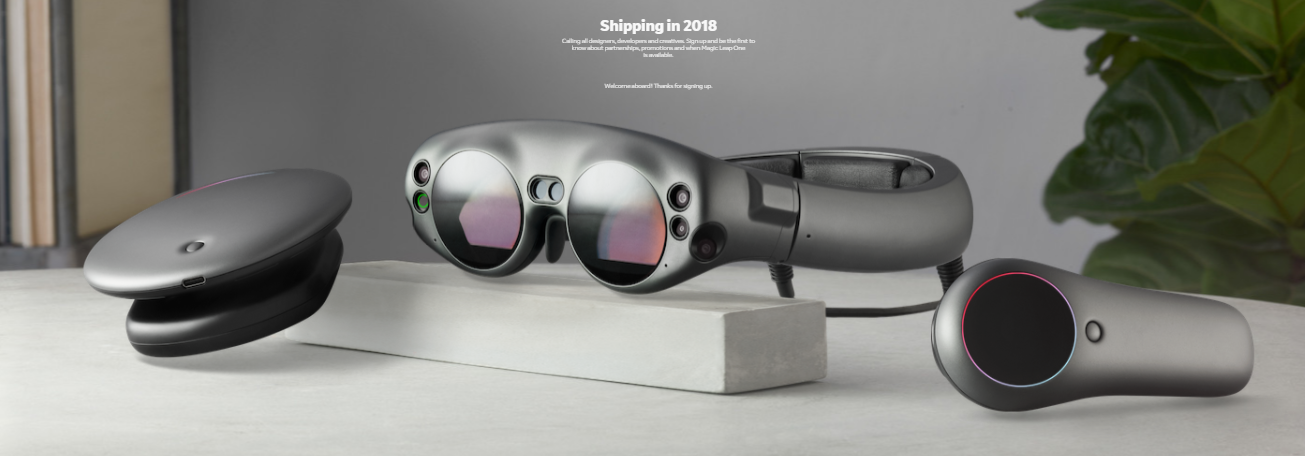
Before pivoting entirely to appeal to the enterprise space in the near-term, Magic Leap was funding a steady stream of consumer-focused apps for the $2,300 headset, a perplexing move at the time considering the company hadn’t released any timeline on when consumers would expect a cheaper headset.
While the company recently announced a Magic Leap 2 in the works—officially slated to launch sometime in 2021— that too will be targeted at enterprise and prosumers, so it may be some time yet until we see Magic Leap re-enter the consumer space.
The post Magic Leap Founder Rony Abovitz to Step Down as CEO appeared first on Road to VR.
Ream more: https://www.roadtovr.com/magic-leap-founder-rony-abovitz-step-ceo/
Qualcomm Says New Wi-Fi 6E Chips Support “VR-class low latency” for VR Streaming
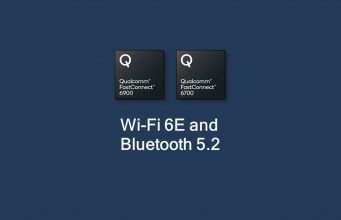
Qualcomm today announced new Wi-Fi 6E wireless chips. Designed for mobile devices, the company says the chips support “VR-class latency” for streaming VR over Wi-Fi.
Qualcomm’s new FastConnect 6900 and 6700 chips are designed to bring the latest Wi-Fi 6E standard to Snapdragon-based mobile devices like smartphones and standalone VR headsets. Wi-Fi 6E is an extension of Wi-Fi 6 (802.11ax) which can also tap into 6GHz bands, opening up more channels and bandwidth.
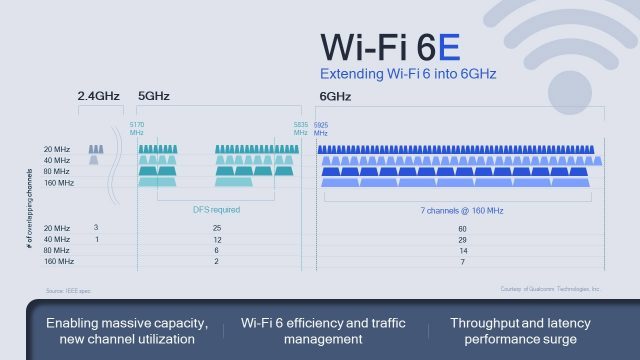
With speeds up to 3.6 Gbps and “VR-class low latency” of “less than 3ms,” Qualcomm says its Wi-Fi 6E chips “provide a strong foundation for this rapidly growing industry segment.”
Of course, that 3ms latency only accounts for the amount of latency that Wi-Fi transmission adds to the equation—so that’s 3ms on top of whatever else your VR rendering pipeline looks like. But, all things equal, 3ms extra should be manageable.
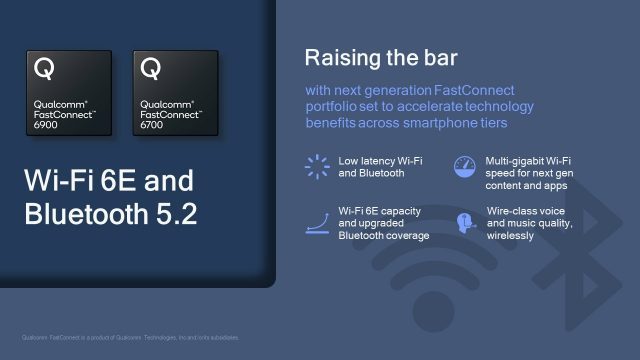
Qualcomm’s new Wi-Fi 6E chips could open two possibilities for VR streaming.
The most practical in the near-term is local streaming from your PC to your headset across your own, local network. The other possibility is remote streaming, where your VR content is rendered in the cloud and delivered over the internet to your router, and then to your headset. In this case there would be more latency on top due to the cloud-to-home transmission.
While it will be some time before the company’s FastConnect 6900 and 6700 chips make it into devices, it’s possible that they could end up in future standalone VR headsets—or smartphones powering VR viewers—which could allow users to stream VR to the headset locally or remotely.
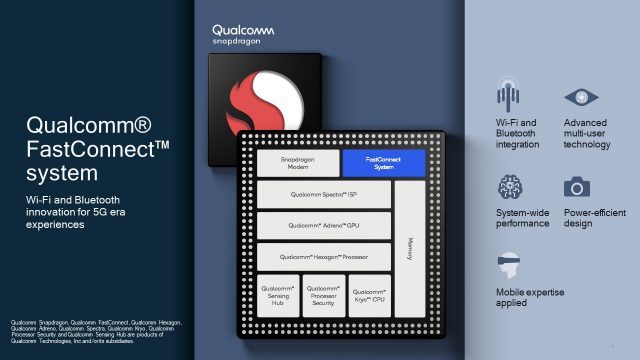
In the near-term, the Snapdragon-ready Wi-Fi 6E chips seem like they would be most applicable to future standalone headsets, like a potential Quest 2. Quest is already has official (wired) streaming from PC to Quest via Oculus Link, and the company has said that it would eventually like to make Oculus Link wireless.
Further down the road, if remote VR streaming becomes viable, standalone headsets could evolve into VR headset ‘thin clients’ which would be entirely reliant on cloud-rendered VR content. Such headsets could save on cost, weight, size, and battery life by using only the hardware necessary for receiving and decoding a VR stream that’s been rendered remotely.
The post Qualcomm Says New Wi-Fi 6E Chips Support “VR-class low latency” for VR Streaming appeared first on Road to VR.
Ream more: https://www.roadtovr.com/qualcomm-wifi-6e-fastconnect-vr-streaming-latency/
Thursday, May 28, 2020
Exclusive Hands-on: HP’s Reverb G2 is the King of Clarity
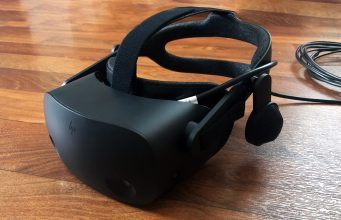
Today HP revealed its next-gen WMR headset, Reverb G2. While the original Reverb beat out the competition in resolution, some aspects of its display held it back from really capitalizing on all those pixels. Reverb G2 brings with it brand new displays and lenses which offer outstanding clarity.
‘Clarity’ is a subjective term which I use to try to boil down how sharp and clear the virtual world looks through a VR headset. There’s all kinds of things that contribute or detract from clarity. Resolution is surely important, but so are things like screen-door effect, mura, persistence, color smearing, and plenty more contributed by the lenses. ‘Clarity’ is the ultimate result of all of these factors.
When aiming for optimal clarity in a VR headset, any one of the aforementioned elements could be the bottleneck, so matching all these factors is key.
The original Reverb clearly still has the best resolution of any major consumer headset thanks to its 2,160 × 2,160 per-eye displays. And, arguably, it has the greatest clarity too. And yet Reverb G2, despite having the exact same resolution, has notably better clarity compared to Reverb G1.
But how do headsets with the same resolution, same display size, and same field of view offer different clarity? Even though the common paper specs are the same, the lenses and displays are different.
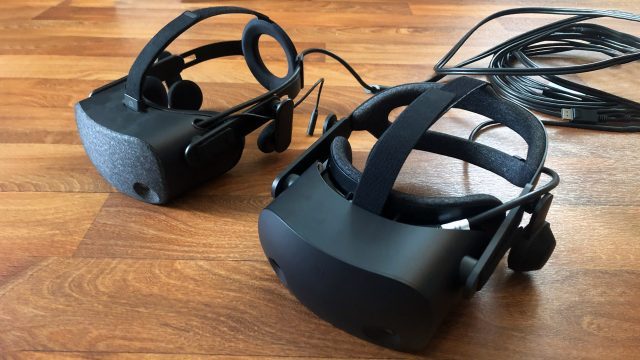
Road to VR got an exclusive hands-on with a first-run prototype of the Reverb G2. I’m fortunate enough to get early glimpses of hardware like this regularly; given that things can still change, I often withhold firm judgements until seeing how the final product shapes up. Even at this stage—where some things are still in flux—I’m confident in calling it Reverb G2 the king of clarity.
Recapping Reverb G1
The G1 has a high pixel density, giving it more resolving power than any other headset in its class. But the display and lenses had some issues that were ultimately holding clarity back.
Notably, the G1 displays had a perceived mura effect; this is similar in appearance but wholly different in origin than the more commonly known screen-door effect (AKA SDE). Mura looks a bit like a faint, fine mesh covering the lenses, or like the display is a bit cloudy. On a phone or TV display, mura isn’t much of a concern because the display doesn’t move with your head. In a VR headset, mura—just like SDE—is more noticeable because it moves over the virtual world as you move your head.
In addition to the mura on G1, the headset also had some surprising red smearing. This can only be seen when moving your head, but the effect causes any red colors in the image drag or ‘ghost’ slightly behind the other colors. This is exacerbated when the red is against certain colors and with fast head movement.
And finally, Reverb G1 had a bit more chromatic aberration (slight color separation toward the edges of the lens) than I would have expected. This wasn’t a major factor in clarity, but most headsets exhibit very little chromatic aberration, and, as you can imagine, the better aligned the light is coming through the headset, the sharper the image will appear.
I’m not bashing the G1 here. It’s a solid headset that’s lead the way in resolution and pixels per degree in the latest wave of consumer VR headsets. But it felt like it had some untapped potential in clarity because of these display and lens bottlenecks.
Unlocked Potential
Reverb G2 unlocks that potential by largely clearing up these issues with new displays and new lenses.
The perceived mura has been nearly eliminated, which alone makes a big difference. G1 was the first consumer headset to effectively eliminate the screen-door effect thanks to its pixel density, but you couldn’t be blamed for not noticing because mura took its place to a degree. With the mura gone on G2, the headset is getting a more ‘quality’ out of its pixels.
(Even though SDE is effectively gone, that’s not to say that G2 has “retina resolution;” you’ll still be able to see aliasing at this resolution. Eliminating SDE is different than achieving pixel density which meets the resolving power of the human eye. Maybe for G3—what do you say, HP?)
So, mura goes down and clarity goes up. This is good. But what about the other stuff? As far as I’ve been able to see, G2 has also eliminated the red-smear which is another nice win over the G1. Some chromatic aberration is still there, though HP tells me that the prototype I was testing hasn’t had a final calibration pass, and it expects this will bring further improvements to chromatic aberration, and possibly some other aspects.

HP also tells me that the redesigned G2 lenses (yes, they’re fresnel) have improved resolving power compared to the G1, which further enhances clarity. You can think of this a bit like ‘sharpening’ the pixels that you’re seeing through the lens.
Like the original Reverb, the displays in G2 are 90Hz LCD. Though HP says they have improved contrast and brightness. That improved brightness has also allowed them to lower the persistence of the display (the amount of time the display stays lit during each refresh). Reducing persistence means the image will look sharper during head movement.
Another win for G2 is a physical IPD adjustment which ranges from 60mm to 68mm, which means that a broader range of people will be able to move the lenses into the ideal position to get the most from the G2’s impressive visuals.
Boiling all of this down, Reverb G2 is the king of clarity, and I feel confident that this will be the headset’s defining factor.
When I fired up Half-Life: Alyx, coming from Index, the G2 nearly felt like looking at the game with new eyes. I was drawn to details that never caught my attention before, like scratches in the shotgun’s metal, letters printed on the side of the pistol, and innocuous stickers covering a gutter pipe. I also quickly noticed that many of the game’s textures don’t quite hold up to G2’s resolution (too soon!).
When I pulled up Bigscreen to see what it was like to use my PC desktop through the headset, it was the first time I didn’t quickly feel bothered by the resolution. The remaining bottleneck for doing typical PC productivity work in VR without compromise is now more in the realm of, field of view, sweet spot, and comfort.
– – — – –
And that’s really just the visuals of the headset. Beyond that, G2 brings a sweeping list of improvements over G1 and other WMR headsets, like better tracking, controllers, ergonomics, audio, and more, all of which we detailed in our Reverb G2 announcement article. HP also announced that the G2 is available for pre-order starting today priced at $600, with an expected release date in the Fall.
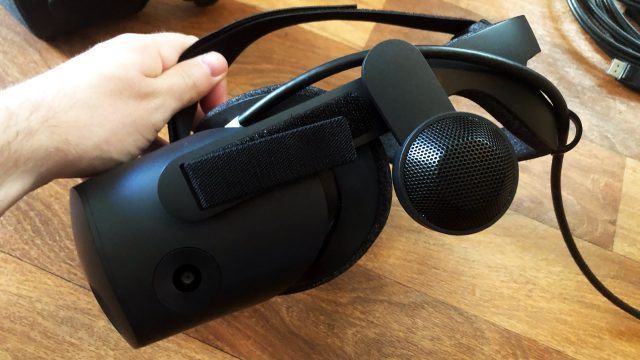
Clearly there was a lot to talk about with the G2’s visuals, so I’ll save some thoughts on other parts of the headset for a future article. I will say now, however, that I haven’t yet been able to try the new controllers. Beyond that, let me know what else you’d like to know about the headset in the comments below.
The post Exclusive Hands-on: HP’s Reverb G2 is the King of Clarity appeared first on Road to VR.
Ream more: https://www.roadtovr.com/hp-reverb-g2-hands-on-preview/
HP Reveals Reverb G2, Next-gen WMR with Sweeping Improvements and an Attractive Price
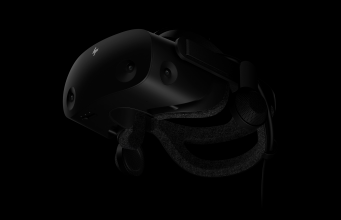
HP today announced its Reverb G2 headset, bringing with it a wishlist of improvements to the WMR product ecosystem. With leading visual clarity, high quality off-ear headphones, improved tracking, and new controllers, there’s a lot to look forward to. The headset is available for pre-order starting today at $600 and is set to launch this Fall.
HP launched the original Reverb headset back in May, 2019; now just a year later the company is revealing its successor, the Reverb G2.
From the upgrades and improvements, it seems quite clear that HP has been listening carefully to feedback from users of the original Reverb and other WMR headsets at large. Reverb G2 is shaping up to be the next generation of Windows VR headsets.
Four Camera Tracking for the First Time on WMR
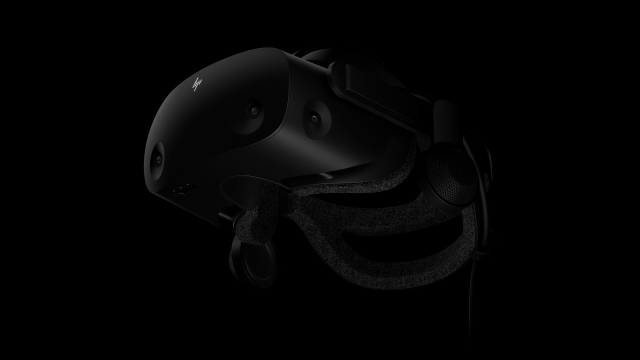
Windows VR headsets were the first major headsets out of the gate with inside-out tracking back in 2017. While it was impressive for the time, competitors like Oculus have since launched headsets with four or more tracking cameras which offer a much larger tracking volume.
Reverb G2 is the first WMR headset to move from two-camera tracking to four-camera tracking. HP says that the additional cameras offer “1.4x more movement capture” compared to other Windows VR headsets.
New Controllers, Compatible with All WMR Headsets
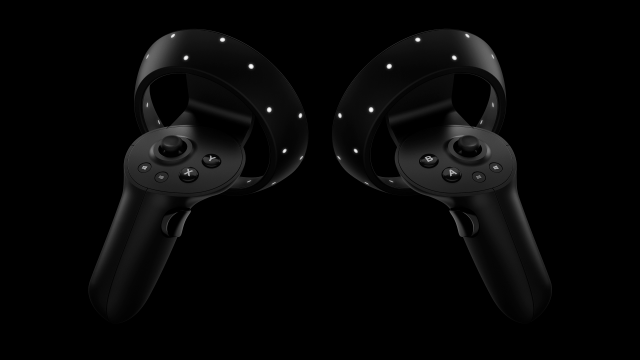
Reverb G2 will also be the first Windows VR headset to offer a substantial controller redesign. While Samsung made slightly more ergonomic versions of the original Windows VR controllers for its Odyssey headsets, HP is bringing significant changes to the shape and input layout.
The original WMR controllers had both a thumbstick, trackpad, and one application button on the face. That was accompanied by an analog trigger and a grip button.
The Reverb G2 controllers—which appear unabashedly shaped like Oculus’ Touch controllers—offer a much closer input layout to other modern VR controllers: a thumbstick, two face buttons, an application button, an analog trigger and a grip trigger. There’s also the ‘Windows’ button for core WMR functionality.
What’s more, HP says that the G2 controllers are backwards compatible with other Windows VR headsets, which means that WMR users who are happy with their current headset will have an option to upgrade their controllers. HP says it plans to sell the G2 controllers separately from the headset for this purpose, but that may not happen until sometime after the launch of the headset, and pricing for the controllers alone has not been announced.
Impressive New Display & Optics
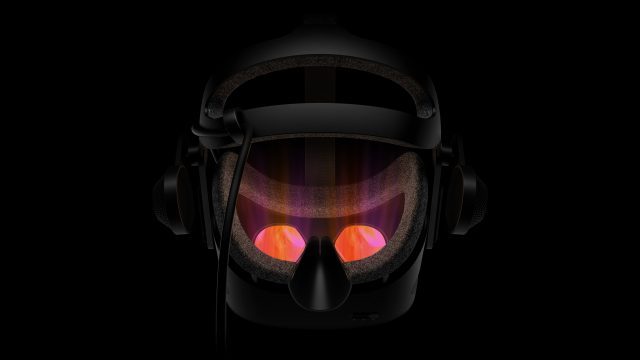
In the display department, Reverb G2 technically has the same resolution as the original Reverb (2,160 × 2,160 per-eye), but it’s an all new display which brings some key improvements over the original. HP says it has better contrast, brightness, and lower persistence.
Combined with new lenses—which HP says Valve helped design and calibrate—Reverb G2 has incredible clarity; easily the best among consumer VR headsets. Check out our exclusive hands-on with G2 for more on the headset’s impressive visuals.
Part of why Reverb is leading the pack in clarity is because its displays are not just higher resolution but also smaller than some other headsets, making the pixels per degree higher than if they were spread over a larger field of view. HP says Reverb G2 maintains the same 114-degree field of view as the original Reverb (which we’ve found to be comparable in FOV to Oculus’ headsets).
New Off-ear Headphones, Courtesy Valve
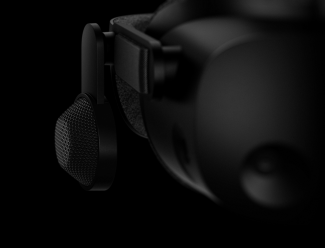
HP makes no secret that it has worked directly with Valve on Reverb G2, and that’s meant adopting Index’s impressive ‘off-ear’ headphones.
The original Reverb headphones gave us nothing to complain about, and were quite a bit better than the default audio in Oculus’ latest generation of headsets. Even so, G2 is bringing upgraded headphones to the table.
HP tells us that these are the exact same amp and drivers that have made Index the audio king among VR headsets. The G2 headphones also adopt the smart ‘off-ear’ mounting approach which we’ve found on Index to be more comfortable and even more immersive than ‘on-ear’ headphones.
Ergonomic Improvements & IPD Adjustment
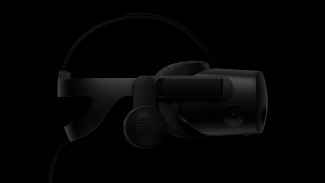
Also pulling a few pages from Valve’s playbook, Reverb G2 has a redesigned head-mount shape, improved padding, and a magnetically attached face-gasket.
The circle design on the rear of the original Reverb has been eschewed in favor of a wider oval which the company says is better shaped to the head. The new padding is notably thicker and wider, better distributing pressure around the eyes and back of the head.
While G2 is borrowing some ergonomic notes from Index, HP’s new headset will retain the side-strap approach for fitting and tightening the headset rather than a tightening dial which has become popular on recent headsets.
G2 thankfully also adds a physical IPD adjustment which allows users to change the distance between the lenses from 60mm to 68mm. This is an important feature for allowing users to get their eyes aligned with the ‘sweet spot’ of the lens.
The headset’s display housing can also rotate 90 degrees relative to its head-mount. This isn’t the ‘flip-up’ function offered by some other headsets, but it adds more flexibility when putting on the headset.
Reverb G2 also brings a lengthy 19.5 foot (6m) cable which is thinner and lighter than the somewhat bulky tether on the original Reverb. The cable connects to PCs via DisplayPort and USB-C; if the USB-C port can’t provide adequate power, an included power adapter can be connected to the tether. HP also noted that the new cable has been redesigned to eliminate the display issues that plagued early models of the original Reverb.
HP Reverb G2 Price, Pre-order, and Release Date
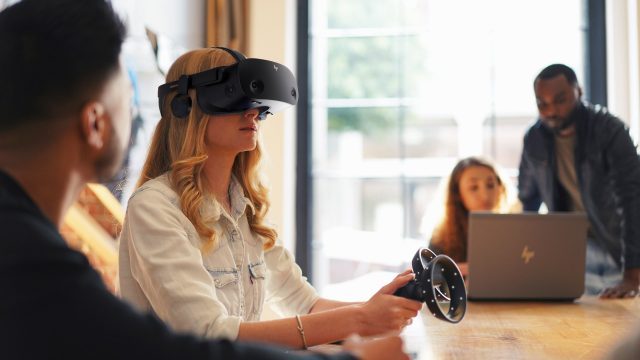
HP has priced Reverb G2 at $600, the same as the consumer version of the original Reverb. The headset’s release date is planned for Fall 2020.
The company is taking pre-orders for G2 in the United States starting today at HP.com, Steam, and “select channel partners.” The company says pre-orders for other “select countries” are expected to open between mid-June and July.
HP Reverb G2 Specs
- Platform: WMR (with SteamVR compatibility)
- Resolution: 2,160 × 2,160 LCD per-eye @ 90Hz
- Field-of-View: 114°
- Tracking: Inside-out, four cameras
- Weight: 1.21 pounds (0.55kg)
- Cable Length: 19.5 feet (6m)
- Connector: DisplayPort, USB-C, power adapter (optional) [DisplayPort to mini-DisplayPort adapter included]
- Controllers: Removable batteries, 2x AA (included)
The post HP Reveals Reverb G2, Next-gen WMR with Sweeping Improvements and an Attractive Price appeared first on Road to VR.
Ream more: https://www.roadtovr.com/hp-reverb-g2-announcement-pre-order-price-release-date/
HP REVERB G2 - ALL You Need To Know About This HP, Valve & Microsoft VR Headset Collab
This is everything you need to know about the HP REVERB G2! This information is directly given by HP. Let's dive into this little baby made by an awesome collab: HP, Valve & Microsoft. ► Check out our VR equipment → https://www.amazon.com/shop/caschary ► Subscribe to see more videos like this one → https://goo.gl/bSJ6L8 The HP Reverb G2 VR headset is the newest Windows Mixed Reality headset by HP. This one is different because it is also in collaboration with Valve and they add a couple of significant hardware upgrades. We are going to talk about all that: release date, pricing, display, lenses, FOV, refresh rate, resolution, tracking, controllers, etc. TIMESTAMPS 00:01 - Intro 00:56 - HP VR Introduction 01:38 - HP Reverb G2 Basics 02:40 - HP Reverb G2 Price & Release Date 03:25 - HP Reverb G2 Audio Specs 04:36 - HP Reverb G2 Display & Lenses 06:00 - HP Reverb G2 Ergonomics 07:20 - HP Reverb G2 Controllers & Tracking 09:07 - HP Reverb G2 Cables & PC Specs Requirements 10:26 - Outro LINKS * - HP Reverb G2 VR Headset official site: https://bit.ly/2MathX6 SUPPORT THE CONTENT ► Become our Patron (includes exclusive rewards) → http://bit.ly/PatreonCasandChary ► Become a Sponsor on YouTube (includes exclusive rewards) → http://bit.ly/JoinCasandChary ► Check out our VR Merch → http://bit.ly/casandchary-merch USE OUR LINKS TO SUPPORT US ► VRcover → http://bit.ly/CCVRCover ► VR Prescription Lens Adapters (5% discount code: "CAS&CHARY") → http://bit.ly/CCWidmoVR ► Oculus Quest Comfort Strap (5% discount code: "CAS&CHARY") → http://bit.ly/CCStudioformVR ► Play PC VR games with your Quest (10% discount code: "JWGTCASCHARY") → http://bit.ly/CCRiftcat ► More on our website → https://casandchary.com/discount-codes-affiliate-links/ OUR GEAR Our VR equipment → https://www.amazon.com/shop/caschary Full PC Specs → https://casandchary.com/vr-equipment/ GET LATEST UPDATES Twitter → https://twitter.com/CasandChary Facebook → https://www.facebook.com/casandchary/ Instagram → https://www.instagram.com/casandchary/ Join our Discord → https://discord.gg/YH52W2k A special thanks to these Patreon Champs for their support: - BaxornVR: https://www.youtube.com/channel/UC1tmq8Y3jC7gNGvW7asmv1Q - Wintceas - Studioform VR - Andy - Albert - Ben P. - Steve Dunlap - Thomas M. Rice MUSIC Music we use is from Epidemic Sounds → http://bit.ly/CCEpidemicSound DISCLAIMER This video was not sponsored. Links in this description may contain affiliate links. We may earn from qualifying purchases from these links (without costing you more). VR on! - Cas and Chary VR #hpreverbg2 #wmr #casandchary
‘Star Wars: Tales from the Galaxy’s Edge’ is a New VR Experience from ILMxLAB

Having just brought its award-winning VR experience Vader Immortal out of Oculus platform exclusivity to PSVR, ILMxLAB today announced its working on a new VR experience called Star Wars: Tales from the Galaxy’s Edge.
The new VR experience is said to take place sometime between Star Wars: The Last Jedi (2017) and Star Wars: The Rise of Skywalker (2019) on the planet of Batuu, this time bringing VR users to the outskirts of Black Spire Outpost of ‘Star Wars: Galaxy’s Edge’, the location-based Disneyland attraction. Black Spire Outpost, the largest settlement on Batuu, is an “infamous stop for traders, adventurers, and smugglers traveling around the Outer Rim and Wild Space,” the official Star Wars website says.
The studio says in an Oculus blog post that the original story will include “multiple styles of gameplay and difficulty settings to bring in a wide variety of players” when it arrives later this year.
And if you’re wondering whether this too will be an Oculus platform exclusive, ILMxLAB is working directly with Oculus Studios to make it happen, so that’s a big yes.
“We’re very happy to collaborate with ILMxLAB again on Star Wars: Tales from the Galaxy’s Edge,” says Facebook VP of Content, AR/VR Mike Verdu. “VR is an incredibly powerful storytelling medium; this experience will immerse fans in a deep and thrilling adventure within the Star Wars galaxy, as they are transported to impossible places through the power of virtual reality.”
There’s no word one exactly when it’s set to release or which platform we’ll be seeing Star Wars: Tale from the Galaxy’s Edge first. If it follows in the footsteps of Vader Immortal, we could be seeing another Quest-first release.
The post ‘Star Wars: Tales from the Galaxy’s Edge’ is a New VR Experience from ILMxLAB appeared first on Road to VR.
Ream more: https://www.roadtovr.com/star-wars-tales-galaxys-edge-vr-ilmxlab/
Wednesday, May 27, 2020
‘The Mighty Eighth’ is a 10-player Cooperative WWII Bomber Game from a Classic Sim Developer

MicroProse was a game developer and publisher behind dozens of classic strategy and simulator titles from the ’80s and ’90s. After being shuttered in the early 2000s, the company (or the brand, anyway) recently made a surprise resurgence. Among four modern games presently in the works is The Mighty Eighth, which the studio describes as a “VR-first” flight combat simulator where multiple players will work together to pilot a WWII bomber.
After being acquired and largely dissolved by the early 2000s, MicroProse announced earlier this month that it’s being rebooted. At the time, the company revealed three (non-VR) titles in the works: Task Force Admiral, Second Front, and Sea Power.
This week the company announced a fourth title, The Mighty Eighth, which promises to have 10-player crews working together to successfully operate the legendary B-17 “Flying Fortress” and B-24 “Liberator” bombers.

The Mighty Eighth is a reboot of MicroProse’s B-17 Flying Fortress: The Mighty 8th (2000), though the studio is better known for its involvement with titles like Civilization, MechWarrior 3, Rollercoaster Tycoon, Grand Prix, and plenty more.

The studio says that the reboot is a “VR-first project,” but that it will also be playable without VR.
Drop those bombs on the right spot, guide your crew through long drawn out day, or the dark, moonless nights, keep your airplane in touch with the rest of the squadron and HQ as you monitor radios and communications. Defend your Flying Fortress by keeping those enemy fighters away from you and your squadron mates. Pilot or co-pilot this beast under a massive amount of stress – and enemy fire, but don’t drop out of formation or you’re a sitting duck.
While up to 10 players can operate the planes, MicroProse says that AI bots can fill in if you don’t have a full crew.
The company hasn’t shown any gameplay yet—and there’s no word yet on a release date—but it has revealed models of the planes, which it says are being “recreated with meticulous attention to detail.”
While MicroProse has dozens of simulation and strategy games to its name, with this studio reboot it isn’t clear how much of the company really remains beyond the brand. At a minimum it’s clear that the reformed company understands that the name brings with it an expectation of quality in the simulation space. Color us intrigued.
Thanks to @hvent90 for the tip!
The post ‘The Mighty Eighth’ is a 10-player Cooperative WWII Bomber Game from a Classic Sim Developer appeared first on Road to VR.
Ream more: https://www.roadtovr.com/the-mighty-eighth-announcement-vr-wwii-bomber-game-cooperative/
‘Blade & Sorcery’ to Get Major ‘U8’ Update on June 4th, Trailer Here
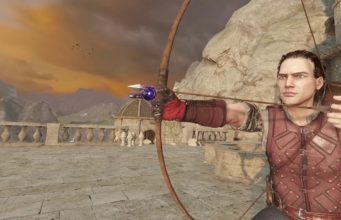
Blade and Sorcery, the physics-based combat sandbox, isn’t out of Early Access on PC VR just yet, however developers WarpFrog announced they’re releasing a major update to the game on June 4th, which includes a new map, weapons, armor, and magical effects.
Update (May 27th, 2020): WarpFrog have announced the big ‘U8’ update is coming on June 4th, available on both the Steam and Oculus Store versions of the game.
The studio also included a new trailer, linked below:
Original Article (May 6th, 2020): The ‘U8’ update is slated to arrive near the end of May, the studio says in a recent Steam update.
WarpFrog shared some work-in-progress video from the upcoming update, first showing off the game’s new bow and arrow effects to the backdrop of a new map, ‘The Citadel’.
In U8, you’ll be able to ‘imbue’ arrows when you draw the bow, infusing it with a number of effects. This also comes alongside a new model for the bow, arrows, and quiver.
Additionally, the update will bring modular armor, which includes three tiers: cloth, leather and plate. Since different tiers of armor have different penetration resistance levels, you’ll have to mix and match techniques to slaying the game’s endless AI foes.
Arrows aren’t the only things that can be imbued with magical effects; swords can also be magically set alight, which allows it to “sear through metal like a hot knife through butter,” the teams says. You’ll also be able to imbue other melee weapons too, such as blunt weaponry “for twice the smashing fun.”
WarpFrog says that all of what is seen in the clips above has been newly created, and isn’t ported over from the original EA launch, which includes new enemies, armor, map, textures, and weapon models.
Check out Blade & Sorcery on Steam here and on the Oculus Store here, which is priced at $20. Through Steam, the game supports Oculus Rift, HTC Vive, Windows VR, and Valve Index.
The post ‘Blade & Sorcery’ to Get Major ‘U8’ Update on June 4th, Trailer Here appeared first on Road to VR.
Ream more: https://www.roadtovr.com/blade-sorcery-u8-update/
Enterprise-focused Standalone Pico Neo 2 & Eye-tracking Version Now Available

Pico Interactive today announced the price and availability of both Pico Neo 2 and its eye-tracking variant, Neo 2 Eye.
Both headsets are available for purchase starting today, with Neo 2 priced at $700 and Neo 2 Eye at $900. With its new Neo 2 headsets, Pico is targeting the enterprise market and will be selling both versions direct to companies.
Outside of Neo 2 Eye’s integrated eye-tracking from Swedish firm Tobii, the two variants differ only slightly in specs. Neo 2 Eye is 20 grams heavier and comes with slightly more RAM than the standard version to account for eye-tracking, something that’s tasked with things like foveated rendering, UI selection, and making social VR more of a natural experience, as a user’s eye movement is translated to a virtual avatar.

When we tried out Neo 2 and Neo 2 Eye at CES 2020 earlier this year, we called it the next best standalone after Oculus Quest for its comfortable thanks to Pico’s inclusion of a rear-mounted battery, serviceable positional and controller tracking, and overall experience.
The headset’s two motion controllers aren’t tracked optically like, for example, Oculus Quest though, instead using tracking based on a NDI’s Atraxa controller platform which fuses data from an on-board electromagnet (EM) and inertial measurement unit (IMU). This essentially allows Neo 2’s controllers to be immune from controller occlusion.
Make sure to check out our full hands-on with both Neo 2 and Neo 2 Eye for more.
Pico Neo 2 Specs
- CPU – Qualcomm Snapdragon 845
- Display – 3,840 × 2,160 LCD (1,920 × 2,160 per lens)
- IPD Adjustment – in software, serving 55mm–71mm IPD
- Refresh Rate – 75Hz
- FOV – 101 degrees
- Storage – 128GB
- Headphones – built in to headband
- Controllers – 6DOF motion controllers, based on sensor fusion of electromagnetic (EM) and inertial measurement unit (IMU)
The post Enterprise-focused Standalone Pico Neo 2 & Eye-tracking Version Now Available appeared first on Road to VR.
Ream more: https://www.roadtovr.com/pico-neo-2-eye-price-release-date/
Tuesday, May 26, 2020
Waltz Of The Wizard Got A Free Hand Tracking Update And It’s Magic!
Waltz Of The Wizard got a free hand tracking update on Oculus Quest. Let's check it out! If you don't know this game, I’ll explain what it’s all about in this gameplay video without spoiling too much. ► Check out our VR equipment → https://www.amazon.com/shop/caschary ► Subscribe to see more videos like this one → https://goo.gl/bSJ6L8 NOSTALGIA! This was one of the games that we demoed when we were looking to buy an HTC VIVE back in 2016. It's now been updated with so much more content and hand tracking. Excited to show this off on the channel for the first time! LINKS * ► Waltz Of The Wizard on Oculus Quest (This VR game): https://www.oculus.com/experiences/quest/2280285932034855/ ► Elixir VR (Another game recommendation): https://www.oculus.com/experiences/quest/3793077684043441/ - Get an Oculus Quest here (US): https://bit.ly/oculusquest-cc - Get an Oculus Quest (UK): https://amzn.to/2Jip6Zg - Get an Oculus Quest (NL): http://bit.ly/2QlCpd2 (Coolblue) SUPPORT THE CONTENT ► Become our Patron (includes exclusive rewards) → http://bit.ly/PatreonCasandChary ► Become a Sponsor on YouTube (includes exclusive rewards) → http://bit.ly/JoinCasandChary ► Check out our VR Merch → http://bit.ly/casandchary-merch USE OUR LINKS TO SUPPORT US ► VRcover → http://bit.ly/CCVRCover ► VR Prescription Lens Adapters (5% discount code: "CAS&CHARY") → http://bit.ly/CCWidmoVR ► Oculus Quest Comfort Strap (5% discount code: "CAS&CHARY") → http://bit.ly/CCStudioformVR ► Play PC VR games with your Quest (10% discount code: "JWGTCASCHARY") → http://bit.ly/CCRiftcat ► More on our website → https://casandchary.com/discount-codes-affiliate-links/ OUR GEAR Our VR equipment → https://www.amazon.com/shop/caschary Full PC Specs → https://casandchary.com/vr-equipment/ GET LATEST UPDATES Twitter → https://twitter.com/CasandChary Facebook → https://www.facebook.com/casandchary/ Instagram → https://www.instagram.com/casandchary/ Join our Discord → https://discord.gg/YH52W2k A special thanks to these Patreon Champs for their support: - BaxornVR: https://www.youtube.com/channel/UC1tmq8Y3jC7gNGvW7asmv1Q - Wintceas - Studioform VR - Andy - Albert - Ben P. - Steve Dunlap - Thomas M. Rice MUSIC Music we use is from Epidemic Sounds → http://bit.ly/CCEpidemicSound DISCLAIMER This video is not sponsored. Links in this description may contain affiliate links. We may earn from qualifying purchases from these links (without costing you more). VR on! - Cas and Chary VR #waltzofthewizard #oculusquest #casandchary
Qualcomm Reveals Plan to Help Commercialize Lightweight, 5G-enabled AR & VR Headsets
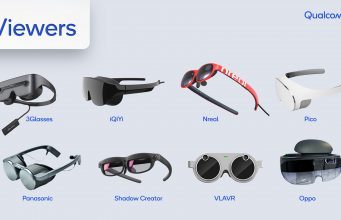
Today, at an online version of this year’s Augmented World Expo (AWE), Qualcomm announced that it’s partnered with a number of global telecoms, smartphone companies, and AR/VR headset manufacturers to deliver 5G-enabled, smartphone-driven headsets to consumers and enterprise customers. It plans to do so within the next year.
The semiconductor giant has partnered with fifteen global telecoms across Asia, Europe, and North America. Qualcomm says the following service providers will be commercializing some form of ‘XR viewer’ within the next year: China Mobile, China Telecom, China Unicom, Deutsche Telekom, EE, KDDI, KT, LG Uplus, NTT DOCOMO, Orange, SK Telecom, SoftBank, Telefonica, Verizon, and Vodafone.
When Qualcomm says ‘XR viewer’, it’s specifically referring to lightweight AR or VR headsets that connect to a smartphone, which in Qualcomm’s case will either be powered by a Snapdragon 855 or 865 chipset, and connect to 5G-enabled handsets via USB-C cable.

The company has also set up a validation process—called Qualcomm XR Optimized Certification Program—to make sure headsets and individual smartphones are up to snuff and work properly together.
The program is intended to certify things on both viewers and smartphones like 6DOF performance, motion to photon latency, power and thermals, and interoperability. Qualcomm will be including a badge as well, so you know what’s been certified as XR compliant.
Headset and smartphone manufacturers already going through the process include 3Glasses, iQIYI, Nreal, OPPO, Panasonic, Pico and Shadow Creator. Smartphone OEMs ASUS, BlackShark, OnePlus, OPPO, Smartisan, vivo, ZTE, are said to follow.
Earlier this year Qualcomm announced that it was effectively powering more than 30 AR and VR headsets, some of which are standalone devices incorporating Snapdragon processors.
The post Qualcomm Reveals Plan to Help Commercialize Lightweight, 5G-enabled AR & VR Headsets appeared first on Road to VR.
Ream more: https://www.roadtovr.com/qualcomm-reveals-plans-help-commercialize-lightweight-5g-enabled-ar-vr-headsets/
At $600K, Tundra Tracker Smashes Kickstarter Goal in Less Than 24 Hours
Tundra Tracker, the SteamVR Tracking tracker in development by Tundra Labs, has well exceeded its $250,000 Kickstarter goal in less than 2...
-
DOOM 3 VR Edition launches today on PlayStation consoles, bringing the 2004 classic horror-shooter to PSVR for the first time. We haven...
-
Tundra Tracker, the SteamVR Tracking tracker in development by Tundra Labs, has well exceeded its $250,000 Kickstarter goal in less than 2...
-
InXile Entertainment, the studio behind The Mage’s Tale (2018) and The Bard’s Tale series, today announced Frostpoint VR: Proving Ground...

